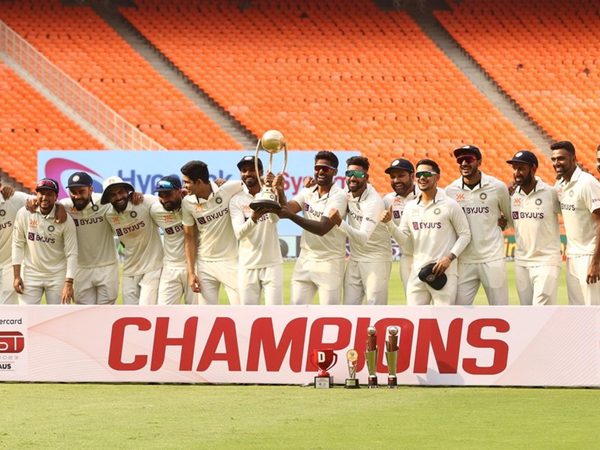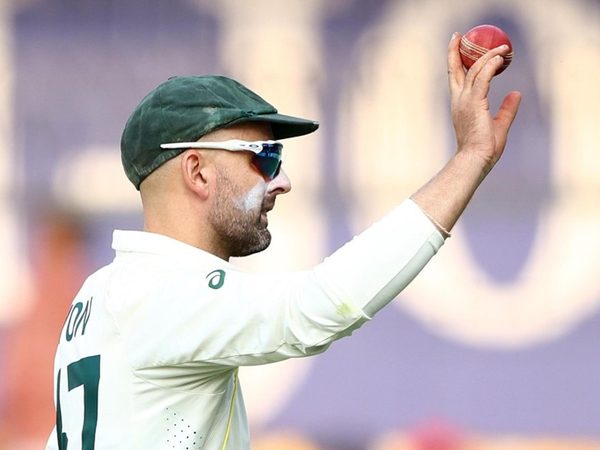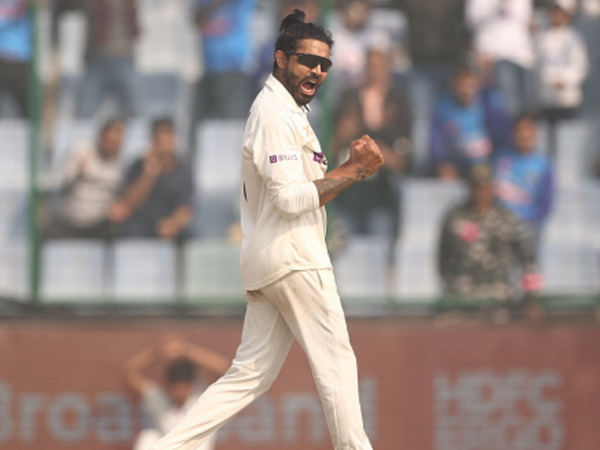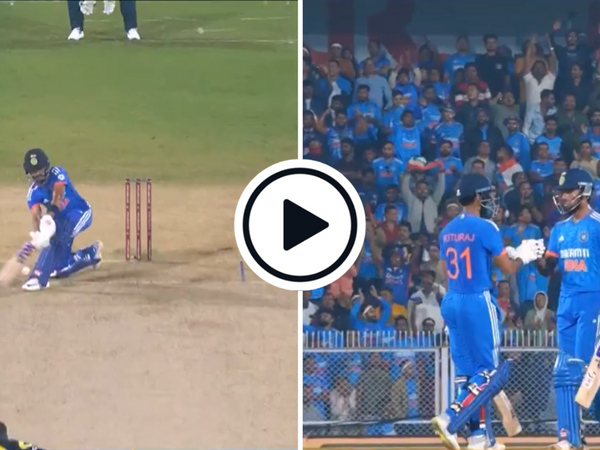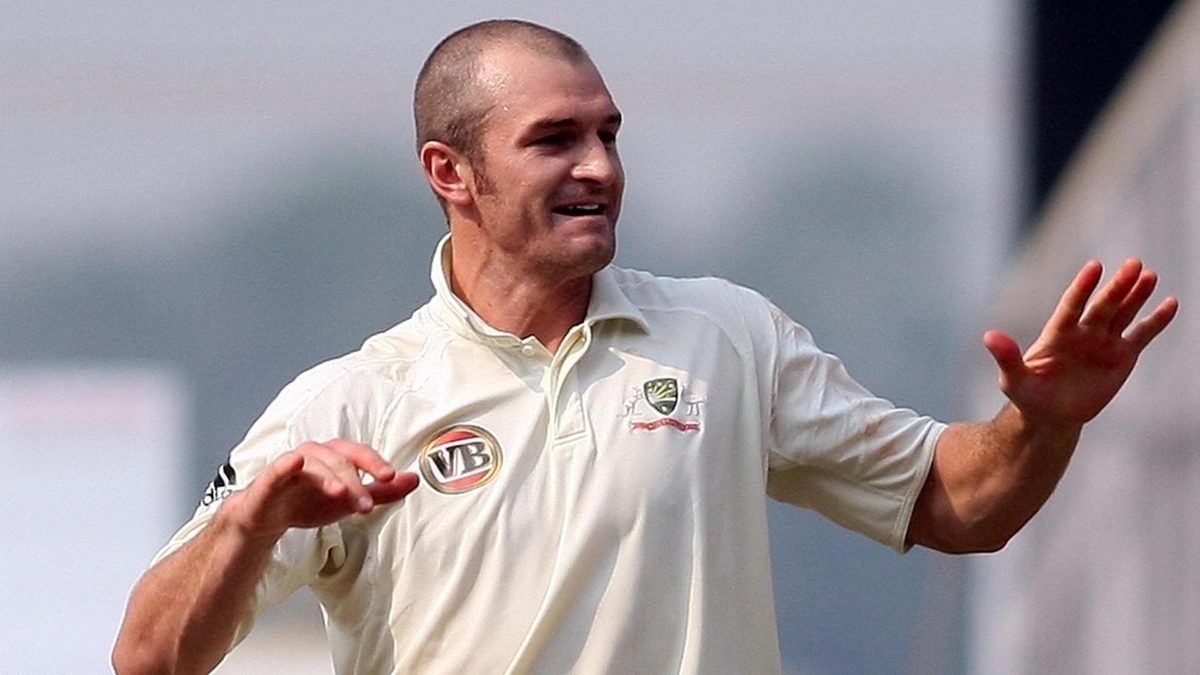
The Border-Gavaskar Trophy has seen Sachin Tendulkar and Steve Smith, Glenn McGrath and Anil Kumble at their glory. And as Abhishek Mukherjee writes, there were other heroes too.
Australia and India first met in Test cricket in 1947/48, but it was not until 1996/97 that the contest had a name, after the two leading run-scorers in the format at that point.
Over 15 series and 52 Test matches, the contest has been dominated by the usual suspects – and some unusual ones.
Nayan Mongia
The Wisden Almanack reported that the “bone-dry, fractured, shifting” Delhi pitch for the one-off Test match in 1996 “could have been mistaken for a third-day strip”.
Yet, after keeping wicket for 73 overs, Mongia opened batting and was eighth out, after a 497-minute vigil. He made 152 when no one else had a score more than 67 in the entire match, and he averaged under 22 for the rest of his career. Half an hour later, he emerged again to keep wicket for 108.3 overs, and opened batting again in what was eventually an India victory.
Michael Kasprowicz
India had already retained the trophy when the final Test match began in Bangalore in 1998. Here, too, they got a 24-run lead before they ran into Kasprowicz, who had suddenly found himself as the spearhead of a weakened pace attack. Now he bowled beautifully on a pitch that offered little to seamers to take 5-28 without the help of a fielder.
While the yorker that castled Mohammad Azharuddin was the best of the five balls, it was catching Tendulkar off his own bowling – a beautifully disguised slower ball – that became a hit. Kasprowicz took only 14 more wickets against India – at 57.29 apiece.
Sachin Tendulkar the bowler
VVS Laxman and Rahul Dravid put on stands in excess of 300 to set up famous wins for India at both Eden Gardens 2000/01 and Adelaide Oval 2003-04.
In the first, Australia were 167-6, trying to push into the final hour of the Test match. Then Tendulkar (3-31) struck thrice, and Harbhajan Singh mopped things up. The wickets remained Tendulkar’s entire series haul, yet, among Indians, he finished only behind Harbhajan Singh, who picked up 32 of the 50 wickets India claimed.
In the second, Australia were leading by 142 in the second innings with seven wickets standing, when Tendulkar had Damien Martyn and Steve Waugh caught at slip in the space of seven balls. India chased down 230 the day after.
Sameer Dighe
Chasing only 155 in the decider in Chennai to win the 2000/01 series, India slipped from 76-1 to 122-5 when Dighe stepped out. Not many debutants would have relished the challenge, but at 32, the Mumbai-hardened Dighe was no stranger to pressure. He saw India lose two wickets on 135, and another on 151, but continued, unperturbed, to help India seal the series.
Dighe played only six Test matches, but his unbeaten 22 remains one of the finest sub-25 scores by a Test debutant.
Ajit Agarkar
Agarkar ended the 1999/00 tour of Australia with five consecutive ducks, four of them off the first ball he had faced. When he finally got a run on his next tour, in 2003/04, he raised his bat – and few could resist a smile.
The Adelaide Test match was set to be a draw after Australia put up 556 and India responded with 523. Even after Agarkar and Tendulkar struck twice each, Australia were relatively safe at 183-5. Then Agarkar opened up the Test match with a career-best of 6-41 as Australia collapsed to 196. Fittingly, he was there at the crease when Dravid hit the winning runs.
For the rest of his career, Agarkar got 52 wickets at 52 apiece.
Jason Gillespie the batter
All through his Test career against India, Gillespie was setting himself up for that farewell double-hundred. It began with the three-hour 47 in Kolkata in 2000/01 as he stuck like a limpet, helping Steve Waugh add 133 for the ninth wicket. At Sydney in 2003/04, India declared on 705-7 and reduced Australia to 350-7 –before Gillespie batted for two and a half hours, made 47, and Australia reached 474.
At Chennai later that year, India secured a 141-run first lead and had Australia at 145-4 in their second innings before Gillespie – well, who else? – batted for four hours for his 26 against Kumble and Harbhajan. Australia eventually set India 229. Rain prevented any play after three overs. Australia won their only series in India since 1969/70.
Michael Clarke the bowler
Dead rubber, rank turner, and Australia led by 99. Even after keeping everything in mind, India were favourites at 182-4 in the second innings – until Clarke took 6-9 in 38 balls (including a phase of 6-7 in 29 balls), before Australia collapsed to 93.
Four years later, in the controversial Sydney Test match, India needed to bat out 72 overs to save the Test match. They had three wickets in hand when Clarke came to bowl the 71st over. He took three balls to help Australia retain the trophy.
Jason Krejza
The most spectacular aspect of Krejza’s career is that he played only once more after his debut, at Nagpur in 2008/09. Australia lost by 172 runs – but that was despite Krejza, not because of him. He went for runs (4.78 in the Test match), but he also got wickets (12). It was not his fault that his teammates got another eight between them.
The most famous ball, of course, was the one that bowled Laxman through the gate in the second innings.
https://www.youtube.com/watch?v=dSZj-A1ENqM&t=4s
Peter Siddle the batter
In 2013/14, India completed the series sweep with a six-wicket win on a turning pitch in Delhi. Having somehow inherited Gillespie’s ability to survive against spin, Siddle made 51 in almost three hours to lift Australia from 136-7 to 262.
India made only 272, but Australia collapsed again, and Siddle walked out at 94-7. This time he switched gear, slamming 50 in 59 balls to take Australia to 164. It was not enough.
Steve O’Keefe
In 2016/17, Australia won the toss, batted first on a Pune turner, and made 260 and a somewhat redundant 285. India were never in the game after the first innings. They were bowled out for 108 and 107, and lasted only 74 overs across the two innings.
The wrecker-in-chief was the Malaysia-born O’Keefe, whose 6-35 and 6-35 are still the best identical figures by a bowler in a Test match. O’Keefe eclipsed the record of Bhagwat Chandrasekhar, who had taken 6-52 in each innings – against Australia.
The entire batch of 2020/21
Bowled out for 36 in the first Test match, India pulled off one of the greatest turnarounds in the history of Test cricket. India fielded 20 men across four Test matches as they kept replacing cricketers from the squad from whoever was available in the era of COVID-19 – and that included two net bowlers, Washington Sundar and T Natarajan.
Over the course of the tour, Mohammed Siraj – one of five debutants in the series went from third-change to first-change to second bowler to first bowler of the innings. Shardul Thakur was recalled after what until that point had been a 10-ball long Test career. Mayank Agarwal was slotted in the middle order, below a promoted Rishabh Pant.
Natarajan’s story, in particular, was a case to behold. While he took three wickets at the Gabba (his only Test match till date), no one in the camp had actually seen him bat before the Test match.

